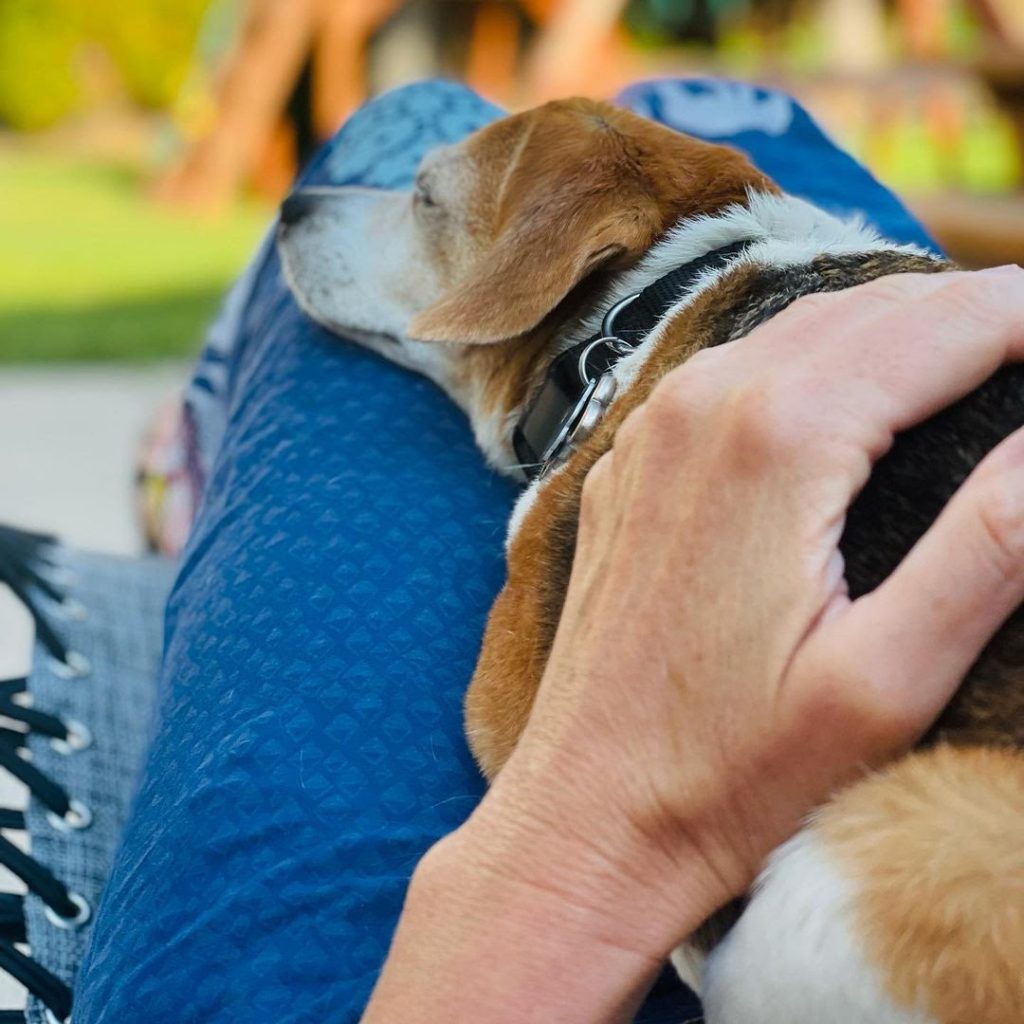Are Pocket Beagles Hypoallergenic? 18 Proven Methods to Combat Dog Allergies
Thinking about getting a new puppy? The Beagle might have been the first dog breed that came to your mind considering how strikingly popular this pooch is to many households. However, you just recently discovered that there is a more adorable little version available out there- the Pocket Beagle.


This dog, although generally moderate in coat maintenance, can shed on average amounts making it quite challenging for people who want to have a dog but have allergies. He is not considered a hypoallergenic companion as he produces the proteins that could trigger mild to worse reactions. However, this fact alone can’t end your dream of getting this wonderful pet.
Learning how to overcome your dog allergies as well as knowing how you would be able to deal properly with your Pocket Beagle will be able to create a mutually healthy relationship between you and your dog. All the information you need is right here and we guarantee you that the chances of living a happy life with your fur-riend will spike!
Table of Contents
Is a Pocket Beagle Bad for People With Dog Allergies?
Things only get worse for those who do not know what may happen if they get a Pocket Beagle and they suffer from dog allergies. In reality, although you can have an allergic reaction with your dog, this is highly manageable as long as you know what measures to take to lessen the risks.
It remains entirely possible for people who are sensitive to dander and fur to live with a dog such as a Pocket Beagle. However, every person who is hypersensitive and considers getting a four-legged furry companion should know that this may sacrifice a bit of your comfortability just so the idea of having a pooch becomes doable.


This may sound overwhelming to some, but bonding with an ever-loyal, affectionate, and active dog such as the Pocket Beagle is worth all the effort. You might just need to do extra things other dog owners don’t usually do because all these are crucial for the success of your relationship with each other.
Sometimes, those who can’t deal with their pets opt to rehome them and this is what you won’t want to happen with your Pocket Beagle. To avoid this, let’s know how this mini Beagle could cause allergies and find out ways to minimize the reactions.
Why Does My Beagle Cause Me Allergies?
Often, there is a misconception that the number one reason why a family member is suffering from dog allergies is because of the loose hairs that land anywhere inside the house. The truth is that every dog produces a certain protein (allergen) called Fel D1 which gets transferred to the coat every time he grooms himself. Fel D1 is present in saliva, urine, and dander (dead skin).
In some cases, dogs such as the Pocket Beagle might over-groom themselves to combat boredom, anxiety, and stress. This, in turn, increases your likelihood to get sensitized since your dog is covered with his self-produced allergens.
Moreover, if your Pocket Beagle is not crate trained, the expected result is him urinating on carpets or corners. Take note that the Fel D1 can find its way up to your membranes that line up your nose and eyes. Cleaning up the mess should also include getting rid of the odor using protective gear so you won’t end up becoming a health hazard casualty.
Lastly, dog dander can trigger allergic reactions, especially if your Pocket Beagle isn’t groomed regularly. If the pooch has layers of debris on his skin, contact with him will cause numerous dangers to your health.
Signs and Symptoms of Dog Allergies
Before bringing your prospective Pocket Beagle home, many suggest spending quality time with the dog first. Not only would you be able to determine the compatibility but also see if you’ll have any allergic reactions.
Some of these may include:
- Itchy eyes, mouth, nose, throat, and skin
- Bumps appearing on the skin
- Asthma
- Constant sneezing or coughing
- A runny or stuffed-up nose
- Red and watery eyes
Do remember that the Pocket Beagle can be a result of various breeding processes. The one that is worth mentioning is that breeders sometimes mate a Beagle with a different dog breed to achieve a smaller Beagle size. Depending on what breed they go for, if the pooch is hypoallergenic or not, the offspring’s allergen level will either surge or plummet.
To make sure if you are allergic to dogs or not, visit your local doctor so he can assess your situation and discuss what allergy tests you can take. Usually, he may conduct a skin test wherein a tiny blot of allergen is placed on your skin and wait for reactions. He may also recommend you to undergo blood testing to find out certain antibodies that trigger allergic reactions.
18 Proven Methods to Combat Dog Allergies
Whether you already brought home a Pocket Beagle puppy or you’re truly determined to have one despite being hypersensitive to dog allergens, it is simply reasonable to know all precautionary measures you can take to fight off unwanted reactions just so your beloved pup doesn’t end up in a shelter home.


Not only are you putting in the effort to save your relationship with your dog but you are also doing yourself a favor by not experiencing having an annoying runny nose or watery eyes. To maintain a safe environment and a mutually healthy bond with your cute teacup Beagle, here’s what you can do:
Do This to Yourself
- Designate clothes that must be worn every time you bond with your Pocket Beagle.
- Wear protective gear such as gloves and a mask if your doggy needs grooming.
- Wash your hands up to your arms every time you have direct contact with your furry pet.
- Avoid touching your face often.
- Don’t kiss, hug, or pet your Pocket Beagle.
- Try allergy shots so you’ll eventually become immune to the allergens your dog produces.
- Ask someone else to bathe or groom the dog for you if possible.
- Take only prescribed medications before having direct contact with your Pocket Beagle.
Do This to Your Dog
- Bathe your Pocket Beagle once or twice a week using canine bathing supplies to lessen the amount of dander and oils on his body.
- Avoid bringing your dog to rooms that you use often.
- Brush your pet regularly. By doing so, you are removing all loose hairs and preventing them from filling up the house uncontrollably.
- Train your Pocket Beagle not to go on certain areas of the house to create boundaries. Limiting his space gives you more control over dander and other allergy-causing factors.
Do This to Your Home
- Vacuum the house often. Not only are you making sure that your carpets and floors are clean, but you are also removing all dead skin cells and dog hairs that are lingering at your home.
- Use high-quality air filters. Investing and installing filters will create a cleaner atmosphere and environment that is free from dust, dander, and other allergy-causing elements.
- Make your bedroom a dog-free zone. Never let your Pocket Beagle get inside nor lay around and roll over your bed. Your blankets and pillows should be the cleanest items in the house as these are what you use for a good night’s rest.
- Keep your pet off the furniture.
- Change the fabrics of your furniture with the ones that won’t attract allergens such as leather. Real leather won’t collect loads of dog hair compared to other synthetic fabrics.
- Refrain from filling up the house with carpets and drapes.
Frequently Asked Questions
Who Gets to Have Dog Allergies?


If asthma or allergies run in your family, then you will also be highly likely to become susceptible to dog allergens. This is because there is a genetic predisposition and other risk factors that increase your likelihood of becoming sensitized to dog allergies. However, research study shows that babies who are exposed to dogs build up an immunity, therefore, lowering the chance of acquiring pet allergy in the future.
Others also reported that they grew out of allergy over time, but this could be a case-to-case basis. It is still important to be cautious about your health instead of bringing a new dog right away to your home or apartment.
Allergy is a common condition and 15 to 30 % of people who suffer from allergies are allergic to dogs as stated by the Asthma and Allergy Foundation of America (AAFA). With several measures you can take, there is a possibility that you will no longer have to deal with allergic reactions.
What Can I Do to Prevent or Cure Allergic Reactions?
Aside from the preventive steps you can take while owning a Pocket Beagle, know that there are also a plethora of over-the-counter medications you could use if ever symptoms kick in. Having them ready in your cupboard is a life-saver, especially that your dog allergy can cause a worst-case scenario such as triggering anaphylactic shock.
- Corticosteroids. This reduces itchiness and is ideal for short-term uses.
- Antihistamines. Helps relieve itching, sneezing, and runny nose.
- Decongestants. These may come in a pill or liquid form that helps relieve a stuffy nose.
- Nasal saline spray. Helps flush out allergens present in your sinus. This is also easy to carry around and convenient to use.
- Montelukast. Reduces or prevents the onset of several allergy reactions.
Can Dog Allergies Go Away With Exposure for Adults?
People who have allergies develop them as infants, however, some individuals can leave their dog allergies by the time they age or mature. Doctors are still looking for an explanation behind this, but for now, this remains a mystery for medical professionals. This gives allergic dog lovers the chance that they might be able to live allergy-free at a certain point in their lives.
For How Long Do Allergic Reactions Last?
Depending on the intensity of the reaction, this may typically last anywhere between 7 to 10 days. If the allergen is still present, expect it to last longer or go worse. It is highly advised to maintain a regular habit of cleaning your surroundings as well as the grooming of your Pocket Beagle so that exposure to the same allergen is less likely to happen again.
Can I Be Allergic to One Dog Breed and Not Another?


Although it may seem strange, it is indeed true that you can be allergic to one dog and not another. All dogs produce the Fel D1 allergen, but what makes the allergic reactions vary is the amount of dander a dog breed produces. Moreover, the characteristics of the allergens have a unique set of modifications. That means, you may not exhibit signs and symptoms of dog allergy if you get in contact with a Poodle, but a Pocket Beagle may make you sneeze uncontrollably.
Can I Still Live With a Pocket Beagle Even if I Have Dog Allergies?
Absolutely! The Pocket Beagle’s shedding is manageable as long as you put in the right effort. He’s much better to get than a regular Beagle since the mini version would mean lesser amounts of dander to produce considering his body size. Not only that, he’s a smart boy who can be easily crate-trained.
If you have a dog allergy and you’re looking to buy or adopt a Pocket Beagle, talk to your vet first so he can detail a plan for you to combat your condition. Then, follow all the listed measures in this article for a successful Pocket Beagle-owning!
